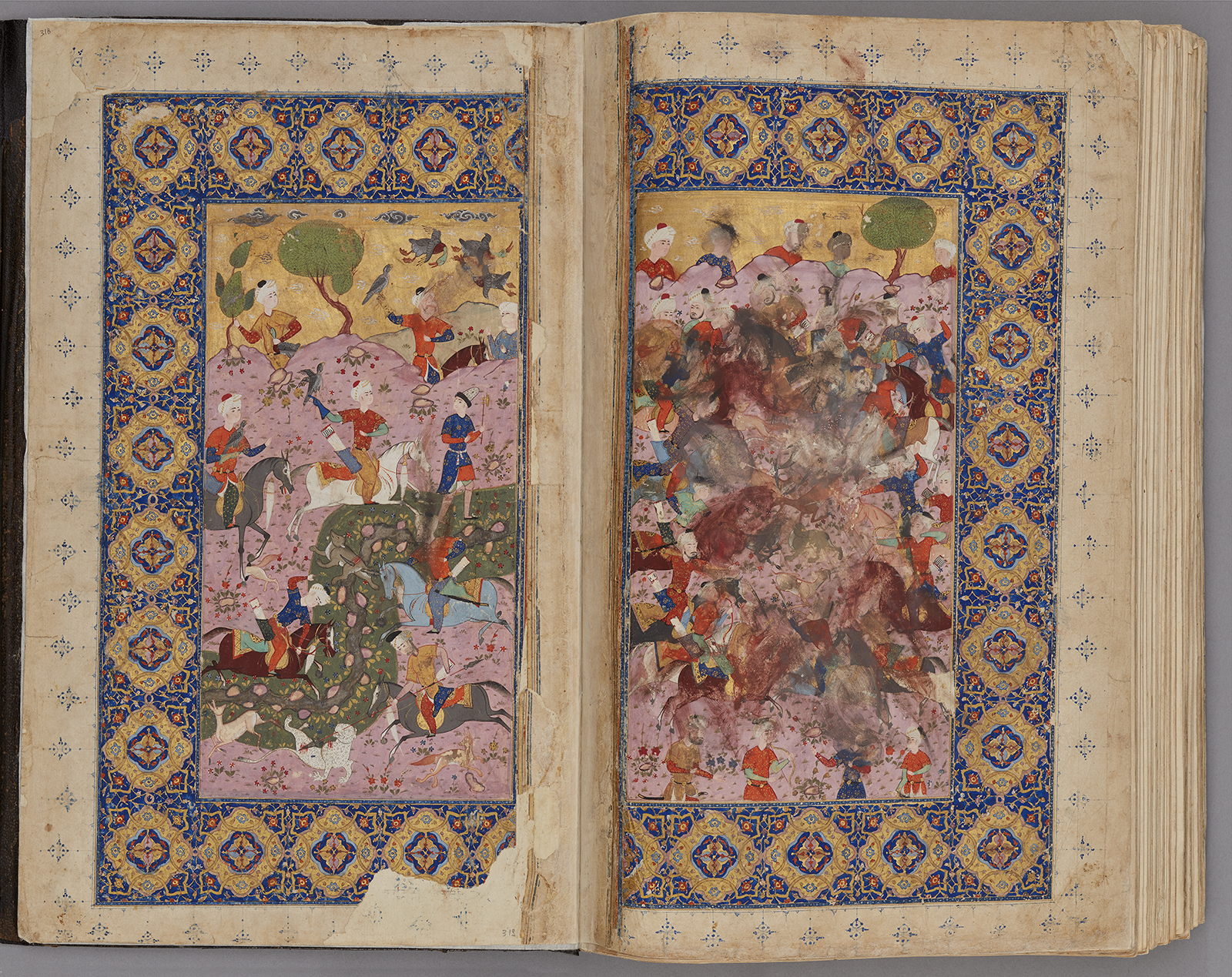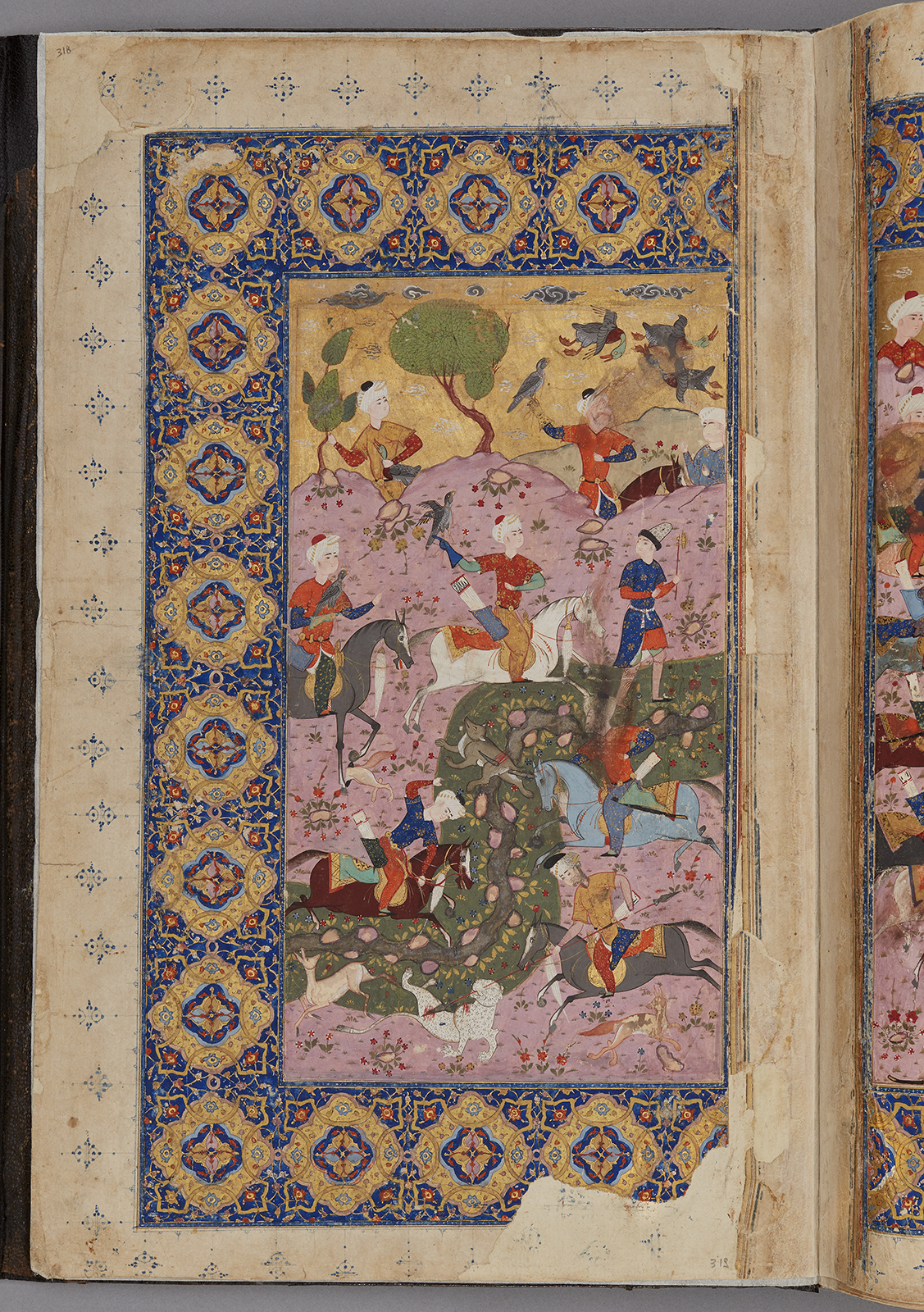Click on the image to zoom
Finispiece, from a manuscript of Nigaristan
- Accession Number:AKM272.f318r
- Creator:Author: Ahmad b. Muhammad Ghaffari, Persian, died 1567 Scribe: Ahmad al-Shirazi
- Place:Iran, Shiraz (probably)
- Dimensions:38.7 cm × 25 cm × 6.4 cm
- Date:1573-74 CE/980 AH/AH 980
- Materials and Technique:Ink, opaque watercolour, and gold on paper
This double-page finispiece is of the manuscript of the Kitab-i Nigaristan by Ahmad Muhammad Ghaffari (d. 1567/8). Completed in 1552, the Kitab-i Nigaristan is a collection of historical anecdotes and incidents, written in prose and focusing largely on peculiarities in Iranian history. The manuscript’s 350 tales are narrated in chronological order, beginning with the Prophet and Imam Ali, continuing to the Abbasid caliphs and other rulers of Iran, and concluding with the Turkmen rulers. Dated 1573, this manuscript in the Aga Khan Museum Collection was copied by the scribe Ahmad Shirazi. It contains 44 illustrations executed in the Shiraz style.
See AKM272 for more information about the manuscript and links to the other illustrations.
Further Reading
Folio AKM272.f317v shows a scene in a landscape that is not identifiable because the painting is smeared at this point. However, folio AKM272.f318r clearly shows a hunting scene in a landscape where a stream flows through it.
Five hunters on horses are distributed across the landscape; two of them are falcon hunters and hold a falcon in their hands. Behind the hill, more hunters are illustrated. One of them is also holding a falcon and is about to hunt a bird. The hunting scene represents a narrative scene in which one can follow the course of the hunt.
AKM272.f317v and AKM272.f318r are the last painted folios with borders of sumptuous gold and lapis lazuli illuminations. These wide borders may be distinctive features of the Shiraz style. Sheila Canby[1] notes a tendency in 16th-century Shiraz manuscripts to paint wide illumination borders with lozenges or round forms to the edge of the paper. She also points out the proportionally higher use of gold paint compared to red paint in Shiraz manuscripts.
Unlike the illuminations of the frontispiece, the illuminations on the finispiece contain no bulges; rather, golden diamond patterns are painted on a blue background. These patterns form a band that runs around the illustration on three sides of the page. They contain smaller diamond patterns in light and dark blue, which in turn have golden diamonds within them.
- Elika Palenzona-Djalili
Notes
1. See Sheila Canby, "Safavid Illumination," 135–53.
References
Canby, Sheila. "Safavid Illumination," Hunt for Paradise: Court Arts of Safavid Iran, 1501–1576. Milan: Skira; London: Thames & Hudson, 2003, 135–53. ISBN: 9780878480937
Note: This online resource is reviewed and updated on an ongoing basis. We are committed to improving this information and will revise and update knowledge about this object as it becomes available.




